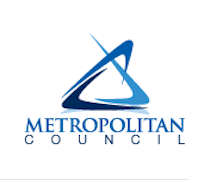Research Related to Education, Healthy Lifestyles, Employment and Inclusion
_____________________________________________________________________________________________
Improving child & adolescent mental health through outdoor programming
November, 2020
Elizabeth Himschoot, Jessica Lloyd, and Aaron Reuben
This report reviews the state of pediatric mental-health in the US, considers what role nature-experiences can play, and provides a list of insights and recommendations gathered from interviews with leaders from existing programs. We end with a menu of potential pilot actions that organizations can take to begin offering nature-based programing for America’s youth aimed at bringing the mental health benefits of the outdoors to new, diverse audiences, who may need it now more than ever.
Himschoot, Lloyd, Reuben. (2020) Improving child & adolescent mental health through outdoor programming. Results of a nationwide study. Yale Center for Business and the Environment. PDF Document
_____________________________________________________________________________________________
Closing the Achievement Gap: Using the Environment as an Integrating Context for Learning. Results of a Nationwide Study
July 30, 1998
Gerald A. Lieberman & Linda L. Hoody

This report relates the story of schools, teachers and students involved in implementing the framework known as the Environment as an Integrating Context (EIC). The results of a nationwide study, a description of the major concepts and assumptions underlying EIC, an exploration of the range of successful EIC programs across the United States, and an analysis of the implications of EIC-based education for student learning and instruction are presented. Observed benefits include better performance on standardized measures of academic achievement in reading, writing, mathematics, and social studies; reduced discipline and classroom management problems; and increased engagement and enthusiasm for learning.
Lieberman, G.A., Hoody L.L. (1998) Closing the achievement gap: Using the environment as an integrating context for learning. Results of a nationwide study. State Education and Environmental Roundtable, San Diego, CA. PDF Document
_____________________________________________________________________________________________
Regional Park Usage Among Select Communities of Color
 March 2014
March 2014
The Metropolitan Council
The Metropolitan Council’s Regional Parks System boast nearly 55,000 acres of designated parklands and over 300 miles of trails throughout the seven county Twin Cities Metropolitan region. This was established with the 1974 Metropolitan Parks Acts, which sought to meet the recreational needs of the people of the metropolitan area.
In 2008, a Metropolitan Council survey or Regional Parks Systems visitors indicated that usage of our regional parks was not representative of the overall demographic makeup of the region, specifically as it relates to communities of color. Thus this research project was conducted. The aim was to identify visitation barriers and suggestions to enhance visitation to the Regional Parks System among distinct subpopulations within the metropolitan region, most notably among communities of color.
The Metropolitan Council (2014). Regional park usage among select communities of color: A qualitative investigation. The Metropolitan Council. PDF Document.


